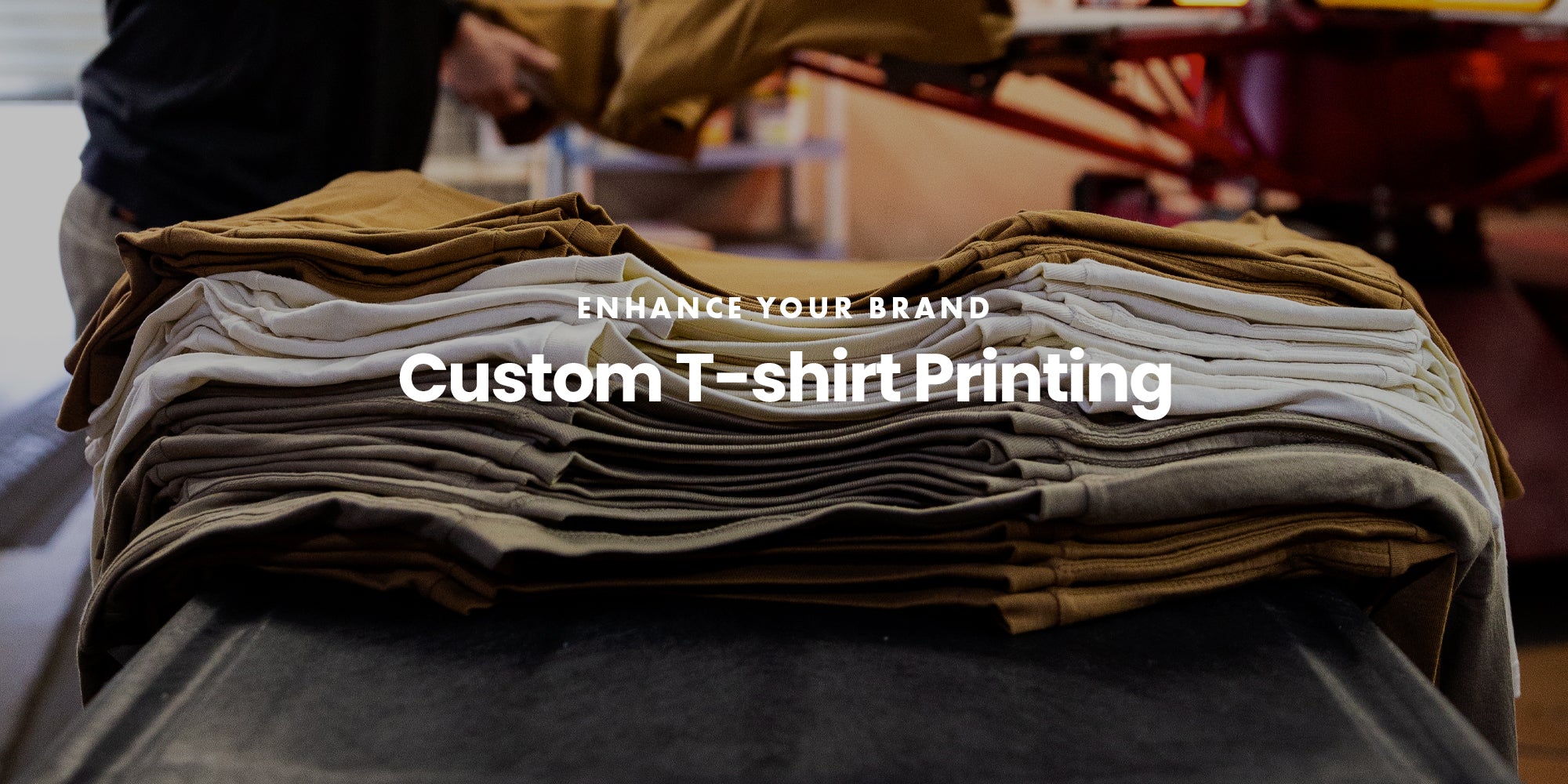Display Printing Uncovered: Whatever You Required to Learn About Tee and Garment Printing Methods
Screen printing is an interesting technique that integrates art with strategy, supplying unlimited opportunities for creativity. Prepared to check out the necessary aspects that make screen printing an art form?
The Basics of Display Printing: Exactly How It Works
When you dive right into display printing, you'll discover it's both a scientific research and an art. At its core, display printing involves developing a pattern, or screen, that permits ink to pass through just in certain areas (screen printing kit). You begin by picking your design and preparing your screen with a light-sensitive solution. Once you reveal this solution to light, it hardens, leaving your style as a negative space.
Position the screen over the fabric, then utilize a squeegee to push ink via the screen onto the garment. Each step is vital, and mastering them will boost your screen printing abilities, changing basic garments right into unique, expressive items.
Sorts Of Display Printing Methods
As soon as you comprehend the essentials of screen printing, it's time to explore the different techniques that can raise your styles. One popular technique is conventional screen printing, where ink is pressed with a stenciled display.
If you're going for great information, think about discharge printing. This strategy eliminates dye from the material, leaving a soft, vintage appearance. One more option is plastisol printing, recognized for its resilience and dazzling shades, making it a favorite for numerous brand names. Experiment with halftone printing to produce gradient impacts and intricate styles. Each technique has its special beauty, so don't think twice to attempt them out to find what fits your design best!
Necessary Devices for Display Printing
To attain sensational results in display printing, having the best equipment is essential. You'll require a sturdy display printing structure, which holds the mesh that transfers your design onto the garment. Next off, spend in top notch squeegees; these are crucial for using ink evenly across the display.
Selecting the Right Inks and Materials
When selecting inks and materials for screen printing, you need to consider the kind of ink that works ideal for your project. Assume regarding fabric compatibility to guarantee your designs look great and last lengthy. Additionally, check out environment-friendly ink choices to make your printing procedure much more sustainable.
Sorts Of Screen Inks
Picking the right display ink is important for accomplishing dynamic, long lasting prints that satisfy your job's needs. There are a number of sorts of display inks to examine. Plastisol ink is prominent for its adaptability and convenience of usage, providing excellent color opacity on dark textiles. Water-based ink, on the other hand, offers a softer feel and is environmentally friendly, making it perfect for those aiming to lessen their ecological impact. Release inks eliminate dye from the textile, resulting in a soft, vintage look yet call for certain handling. Ultimately, specialty inks, such as metallic or glow-in-the-dark, can include special impacts to your layouts. Review your task needs and pick the ink that straightens finest with your desired end result.

Fabric Compatibility Considerations
Recognizing textile compatibility is essential for attaining top quality display prints, especially given that different materials react uniquely to numerous inks. When choosing inks, take into consideration the textile kind-- cotton, polyester, or blends. For cotton, water-based inks function well, supplying soft qualities and breathability. Polyester, on the other hand, often needs plastisol inks for far better bond and lively shades. If you're publishing on blends, you might need to make use of a combination of both kinds. Constantly examine your inks on sample textile to ensure they stick effectively and maintain shade integrity. Additionally, maintain in mind that fabric weight and structure can impact the last end result, so selecting the ideal ink and product combo is essential for your task's success.
Eco-Friendly Ink Options
Environment-friendly inks are ending up being a preferred selection for screen printers who wish to lessen their ecological effect while preserving quality. When choosing inks, think about water-based inks, which are much less damaging and simpler to tidy up contrasted to conventional solvents. These inks bond well with materials, providing vibrant outcomes without harmful chemicals. You may also explore eco-solvent inks that utilize less unpredictable natural compounds (VOCs), making them a more secure option for both your health and wellness and the earth.
In addition, try to find inks made from eco-friendly resources, such as soy or vegetable-based choices. By choosing the ideal inks and products, you'll not just create sensational layouts but likewise add to a much more sustainable printing procedure. Make the button, and your prints will certainly reflect your dedication to the atmosphere!
Preparing Your Layout for Display Printing

File Style Requirements
To assure your layout looks sharp and vivid on material, you'll require to pay close interest to file format needs for screen printing. Make sure your style has a clear history to stop undesirable white sides on your prints. Maintain shade modes in mind; CMYK is conventional for screen printing, so transform your RGB creates appropriately.
Shade Splitting Up Methods
Color splitting up is a necessary step in preparing your design for display printing, and understanding it can significantly enhance your print top quality. You'll require to break your design right into private shades, as each shade requires a different screen throughout printing. This accuracy not just assures accurate color depiction however additionally streamlines the printing process.
Resolution and Size
Attaining the most effective lead to display printing begins with ensuring your design has the appropriate resolution and size. Ideally, your art work should be at least 300 DPI (dots per inch) for sharp, clear prints. If you use lower resolution, your last item may look pixelated and amateur.
When it comes to dimension, think navigate to this site about the dimensions of your print location. Style your artwork to match the final print size, ideally creating it in the actual dimensions you'll be publishing. This way, you'll prevent any unforeseen scaling concerns.
Constantly check your design in both vector and raster layouts. Vector graphics can be scaled without losing high quality, making them optimal for display printing. Preparing appropriately will ensure your layout looks impressive on every garment!
Step-by-Step Screen Printing Refine
Screen printing is a dynamic procedure that enables you to create anchor vivid designs on different surface areas. To obtain begun, you'll need a display, solution, and your selected ink.
After cleaning out the unexposed emulsion, your display is prepared. Set it up on your printing surface and straighten your garment beneath it. Pour ink onto the display and use a squeegee to press the ink via the pattern onto the material. Lift the display carefully and let the print completely dry. Lastly, treat the ink using warmth to guarantee sturdiness. That's it! You have actually efficiently screen printed your layout.
Tips for Successful Display Printing Projects
While you're diving right into your screen printing tasks, keep in mind that prep work is essential to success. Start by collecting all your products-- inks, garments, screens, and squeegees. A clean work area aids avoid undesirable errors, so tidy up prior to you begin.
Next, validate your art work is high-resolution and appropriately sized for your garment. Evaluate your display for appropriate direct exposure and tidy it thoroughly to prevent smudges. When blending your inks, comply with the manufacturer's guidelines to achieve the best uniformity.
During printing, use even pressure with your squeegee for constant results. Do not hurry; take your time to verify each print meets your requirements. After printing, let your garments dry entirely prior to taking care of or packaging them.
Lastly, always maintain a sample of your work for future reference. By doing this, you can examine your progression and boost your strategies Visit This Link over time. Satisfied printing!

Often Asked Concerns
The length of time Does It Take to Set up a Screen Printing Job?
Establishing up a display printing work commonly takes about 30 minutes to an hour. You'll prepare the displays, mix inks, and readjust journalism. The time varies based on intricacy and experience, so stay organized!
Can I Publish on Different Fabric Enters Using the Very Same Strategy?
Yes, you can print on different fabric types making use of the exact same technique, yet you'll need to readjust your setups and inks. Some materials take in ink in a different way, so exploring assurances the very best outcomes for each material.
What Are Usual Errors to Avoid in Screen Printing?
When display printing, prevent common errors like making use of the incorrect ink, neglecting correct exposure times, or avoiding pre-press checks. Always check your configuration and maintain tidy displays to ensure quality results each time.
Exactly How Can I Properly Tidy and Maintain My Screen Printing Tools?
To properly tidy and keep your display printing devices, you ought to consistently wash screens with appropriate solvents, check mops for wear, and ensure all devices are stored dry and dust-free. Consistency boosts and avoids costly repair work efficiency.
Is Screen Printing Ecologically Pleasant Contrasted to Other Approaches?
Screen printing can be extra eco-friendly than other methods, specifically if you utilize water-based inks and eco-conscious products. By picking sustainable supplies and practices, you decrease waste and lessen your influence on the world.
Display Printing Uncovered: Whatever You Need to Know Regarding Tee and Garment Printing Strategies
At its core, screen printing includes producing a pattern, or display, that allows ink to pass through just in particular locations. Setting the screen over the textile, after that utilize a squeegee to push ink through the display onto the garment. One prominent approach is conventional display printing, where ink is pressed through a stenciled display.When choosing inks and products for display printing, you need to take into account the kind of ink that functions best for your job.